[Typo]Graphic Workshop of Amsterdam
GWA Graphic Workshop Amsterdam offers courses in various craft techniques such as letterpress, lino, woodcut and bookbinding, as well as educational programs, corporate and family outings.
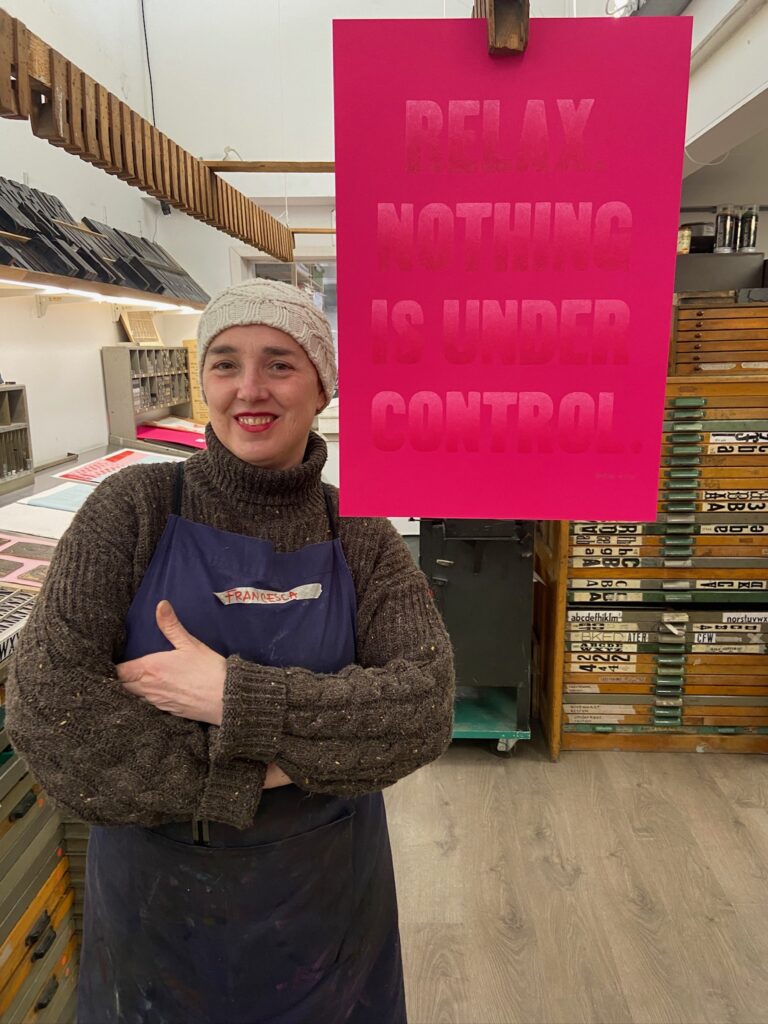
GWA began in 2004 as Grafisch Werkcentrum Amsterdam in Amsterdam Oost. Three gentlemen, including the two manual typesetters Wiek Molin and Martin Veltman, watched with dismay as the printing presses in their immediate area were consigned to the scrap heap. They decided to find a home for them and found it on Molukkenstraat. It was not to be a museum, but a workshop with an emphasis on transfer. A visionary idea, it turned out: thanks to them, this important heritage has been preserved, and made widely accessible. GWA offers courses in typesetting, linocut, woodcut, bookbinding and dry needle/etching. As of 2017, GWA is known as Grafische Werkplaats Amsterdam. With TYPO to place more emphasis on expanded typesetting.
The workshop is open Tuesday through Saturday, 10 am to 5 pm. Every Friday at the end of the afternoon you can walk in with ideas for printing projects. We are happy to think with you.
Workshop
GWA | NDSM PRINT consists of three shipping containers totaling 150m2. In 2024, we expanded the workshop with an additional space to 250m2. Presses, typefaces, cutting machines and finishing equipment. The typesetting department is GWA’s greatest pride: there are few places so extensively sorted that are also allowed public use.
GWA is always interested in graphic materials. Stamps or clichés found in the attic? Books that are of educational value? Please contact us. Who knows, maybe we can do something with it, or we know someone who will be happy with it. Looking for material yourself? Also take a look at www.drukwerkindemarge.org.
Machinery

Eickhoff Trial Press
The Eickhoff is a German quality proof press. The printing bed is 50 x 70 cm. GWA has two of these presses, one from about 1965, the other from about 1930.
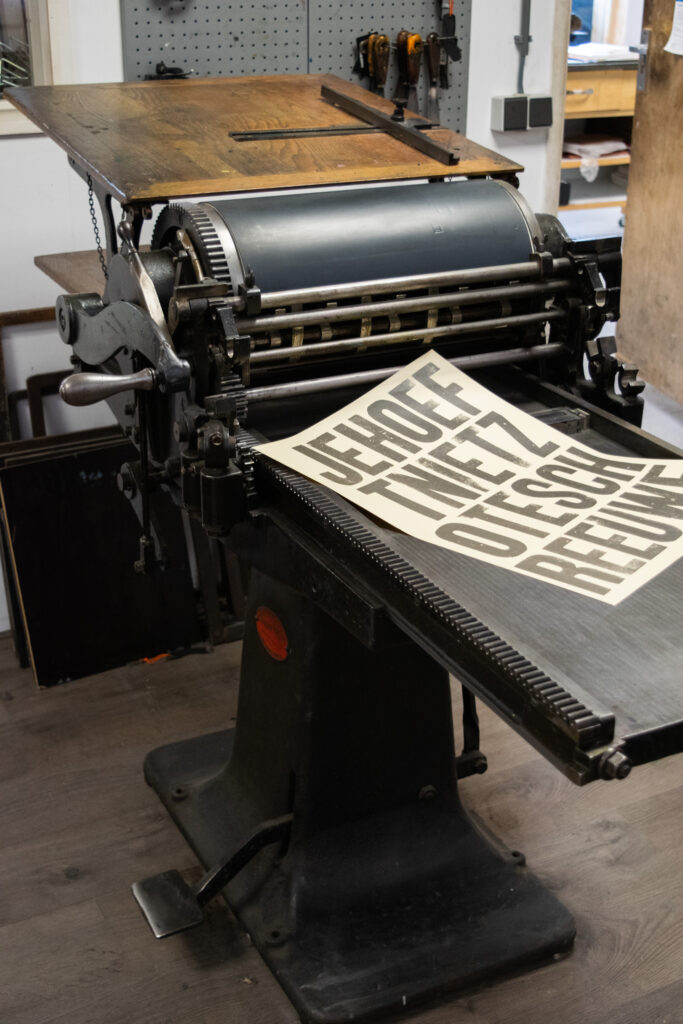
Potter Trial Press
The Potter is an American test press, manufactured in Chicago, and has a pressure bed of 65 x 43 cm. Easy to use, though slightly heavier than the Korrex.
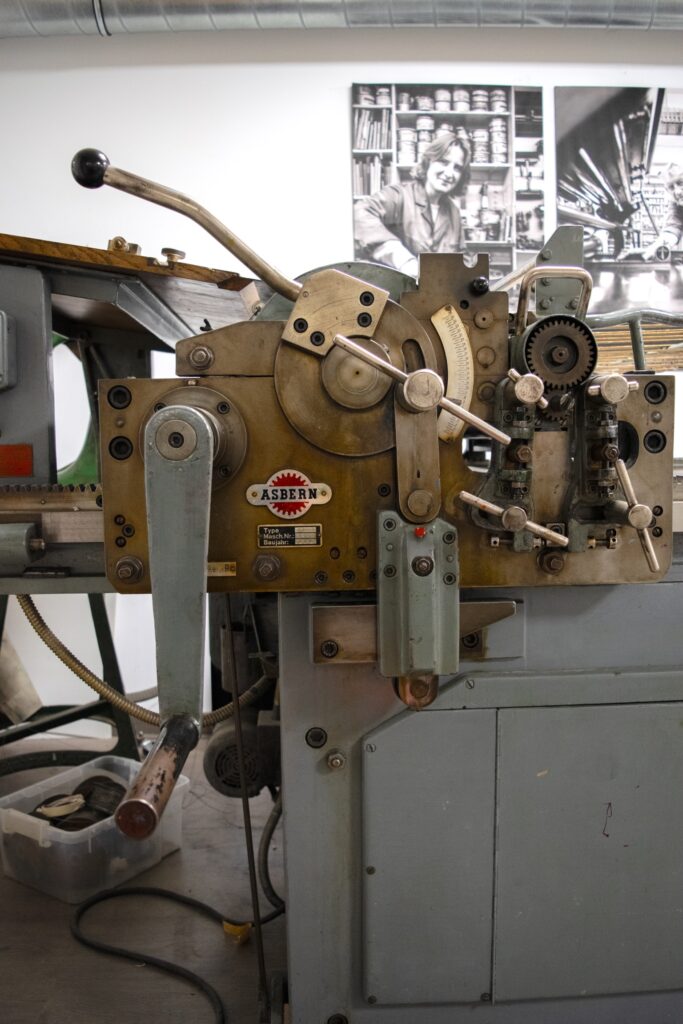
Asbern Cylinder Press
This press is not only suitable for large format posters, but also ensures that you have enough steps on your pedometer at the end of your project. It has electric inking and an infinitely adjustable cylinder.

Big William
This 1830 etching press was originally a calander press, which was converted to an etching press by artist Willem van Leusden (1868-1974). Among other things, the wooden blocks and strips of leather gave the press more height and more suspension. On this press, Van Leusden conducted an interesting study of the etching technique of Hercules Seghers, Rembrandt’s famous contemporary.
GWA gave the press, which had been stored for some time in the cellars of the Centraal Museum in Utrecht, a third life in 2012. With many hands, help from sponsors and support from some funds (Prins Bernhard Cultuurfonds, AFK, Fonds tot Nut van t Algemeen and Stadsdeel Oost) GWA brought this beautiful piece of heritage back to its ‘old’ state. The steel press bed measuring 1.80 by 73 cm was completely renewed, the wooden slippers remade and a craftsman blacksmith was called in for the cast iron base. The press was presented with a publication, a poem written especially for the occasion by Hagar Peeters and a dry needle by Peter Pontiac.
By turning the wheel of “William” you are really turning the wheel of time. The project, and the publication, is therefore called Turning Against Time
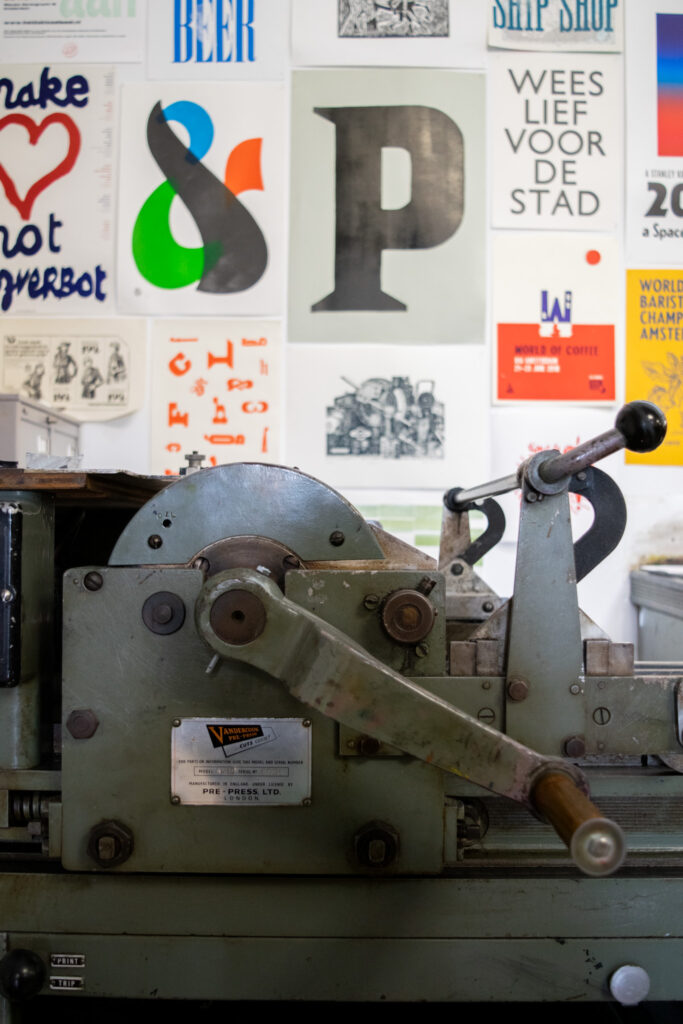
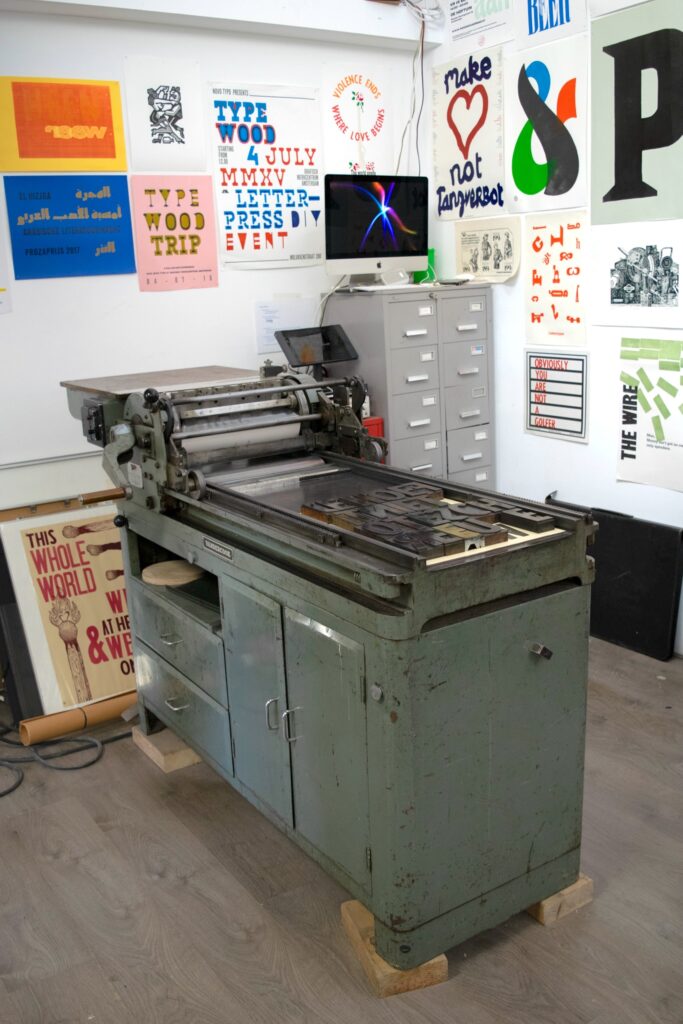
Vandercook
The first Vandercook was produced in 1909, and is considered by some to be the Rolls Royce among presses. The Vandercook was the blueprint for European presses like the German Grafix and the Swiss FAG. Also special: we got the press on loan when we moved to North, and the need for a good working electric press was very high. Owner Jan Willem de Looijer is a small rebel within the printing world with ‘Mizdruk’ and his School of Bad Printing. And rebels, we always like to keep a leash on that!
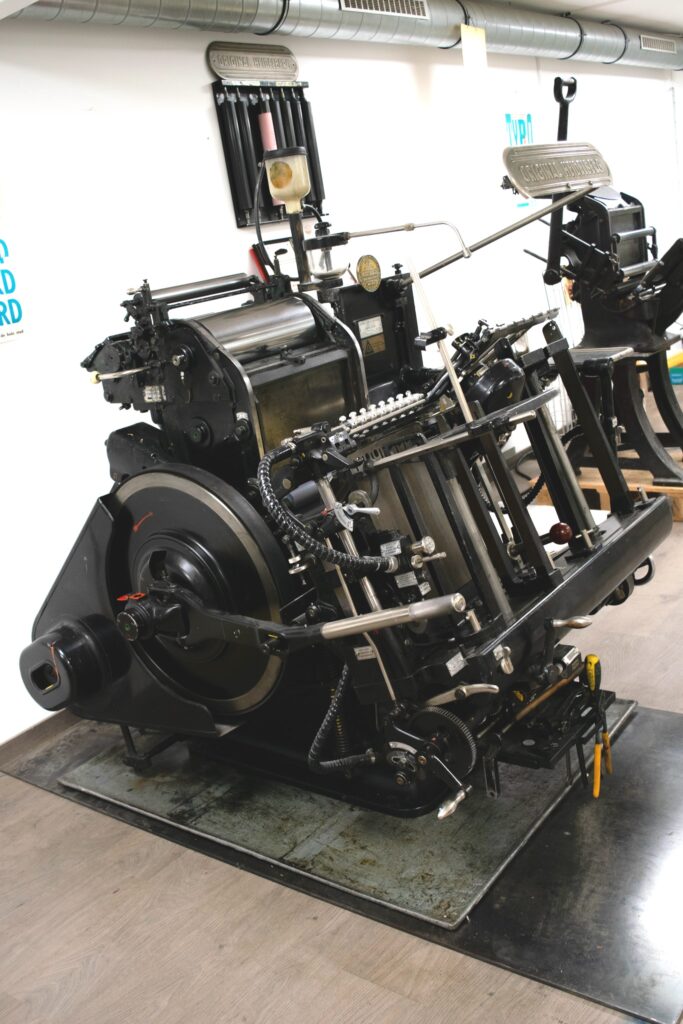
Heidelberger Degel Automatic
This Heidelberger Degel Automatic dates from about 1960. It is the only automatic press in the workshop. That does not mean it can be operated with the push of a button. To operate an HDA requires longer training. Through a master apprentice program, an accomplished printer taught the tricks of the trade to a younger GWA employee in 2015. Another two “young printers” were prepared in 2022.
The Heidelberger can print a size of up to 31 x 23 cm. It is used for small printed items such as postcards, birth announcements, wedding cards or other types of invitations.

Korrex Stuttgart
The Korrex Stuttgart cylinder proof press is the smallest of the Korrex family, and features a 33 x 44 printing bed with a manual inking mechanism. The press is very precisely adjustable, and a favorite of workshop operators for its reliability. A quality press built in 1965.
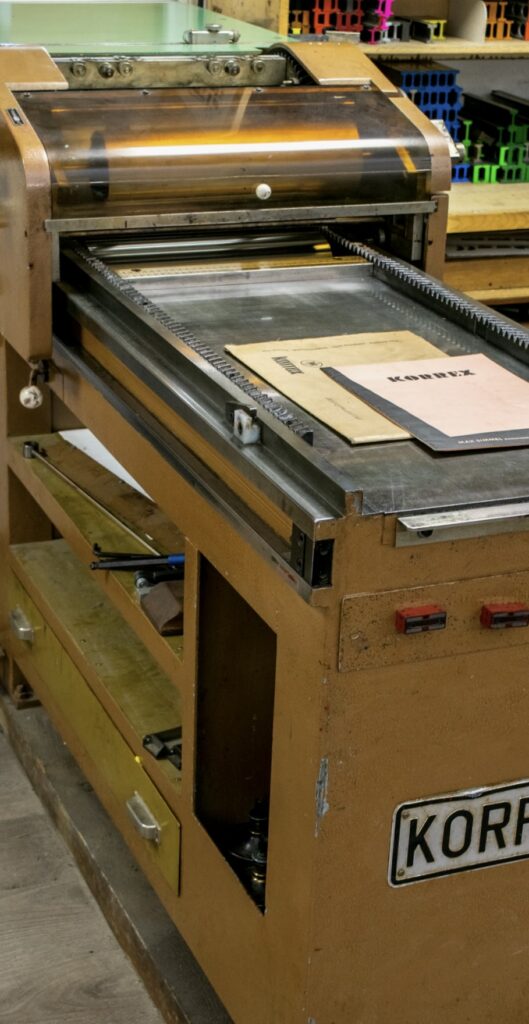
Korrex Nuremberg
A recent acquisition from GWA, unexpectedly obtained from the valuable household effects of a retired bookbinder. This cylinder press with automatic inking stands out for its tasteful jacket, the smoked glass that protects the inking and the ease with which it can be cleaned.
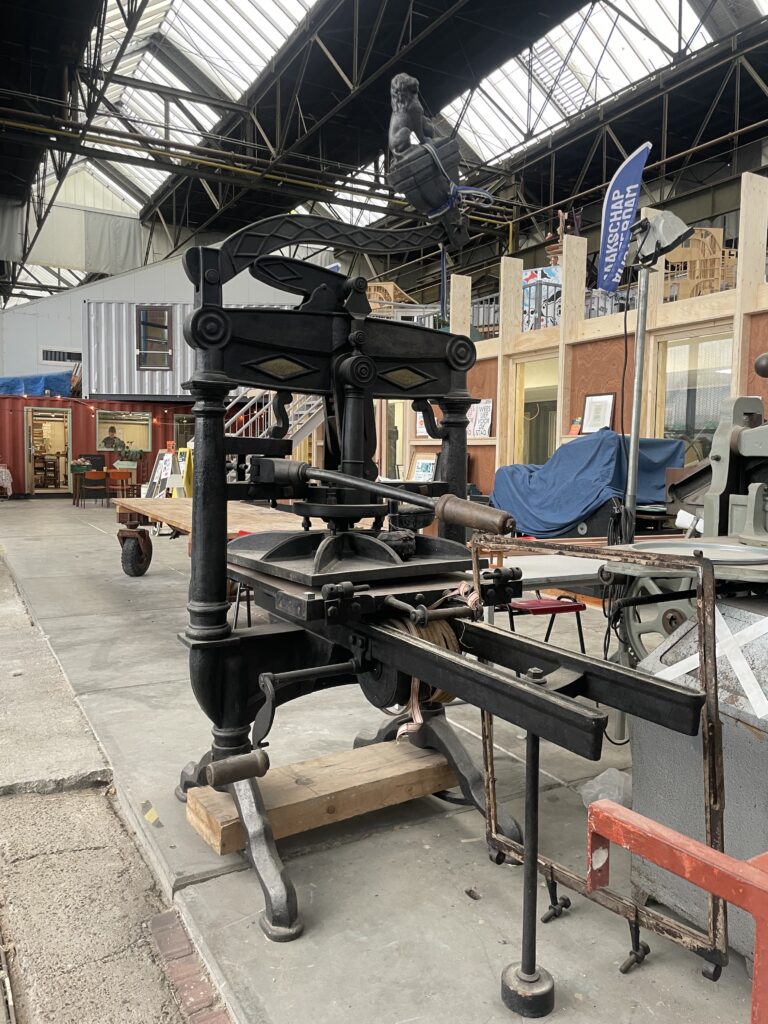
J.P. Le Jeune Knee Lever Press
Particularly beautiful, historically interesting press by lithographer Piet Clement, awarded to us by workshop Basement Diepenheim. Note the lion, which together with the ball under its paw serves as a counterweight. The knee-length press was the favorite tool of printer and artist H.N. Werkman. The press was renovated in 2024 by our volunteers, with help from master printers like Erik Desmyter.
The typesetting plant
Wood & lead
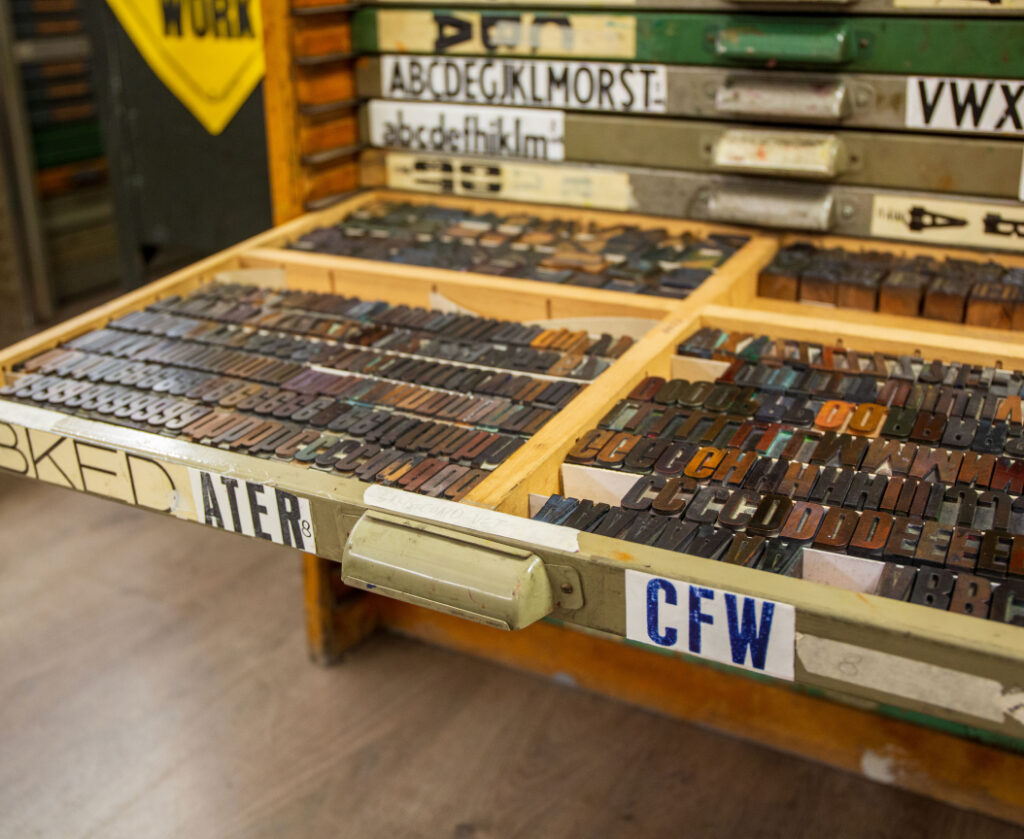
GWA’s typesetting facility is public, meaning that anyone who has taken a course may use the materials.
GWA owns a wide range of lead letters, ranging from the classics like the Times and the Nobel to a scrolled Aigrette. There are also cabinets of typesetting white, (decorative) lines, reglettes and clichés. Each letter is available in a limited number of sizes. The largest lead letter is 72pt.
The wooden letters are larger, and made of fruit tree wood. An extremely hard wood that has withstood the ages. There are many variations in this as well, from Gothic to sleek modern. Of some letters, the alphabet is not complete. Improvisation is also a key word in letter printing.
A letter sample (a listing of all available letters) is in the works.
New typefaces are still being added: in 2015, designed Novo Typo Typewood, for example, a wooden version of a chromatic digital font. This unique policy has been in use in the workshop ever since.
In 2017, the Kanat was added: an Arabic wooden letter designed by Lara Captan.
In 2022, we obtained a special collection with wood from 1880 by margin printer Jacobi.


Founder and driving force behind Grafische Werkplaats Amsterdam. Hand setter, artist, designer, exhibition maker, teacher. Together with childhood friend Martin Veltman, around the turn of the century, they watched with sorrow as printing presses and related materials rapidly disappeared into the scrap heap. Together with Rene Koome they founded the workshop on Molukkenstraat in 2004, and in 2007 Stichting Grafisch Werkcentrum Amsterdam was born.
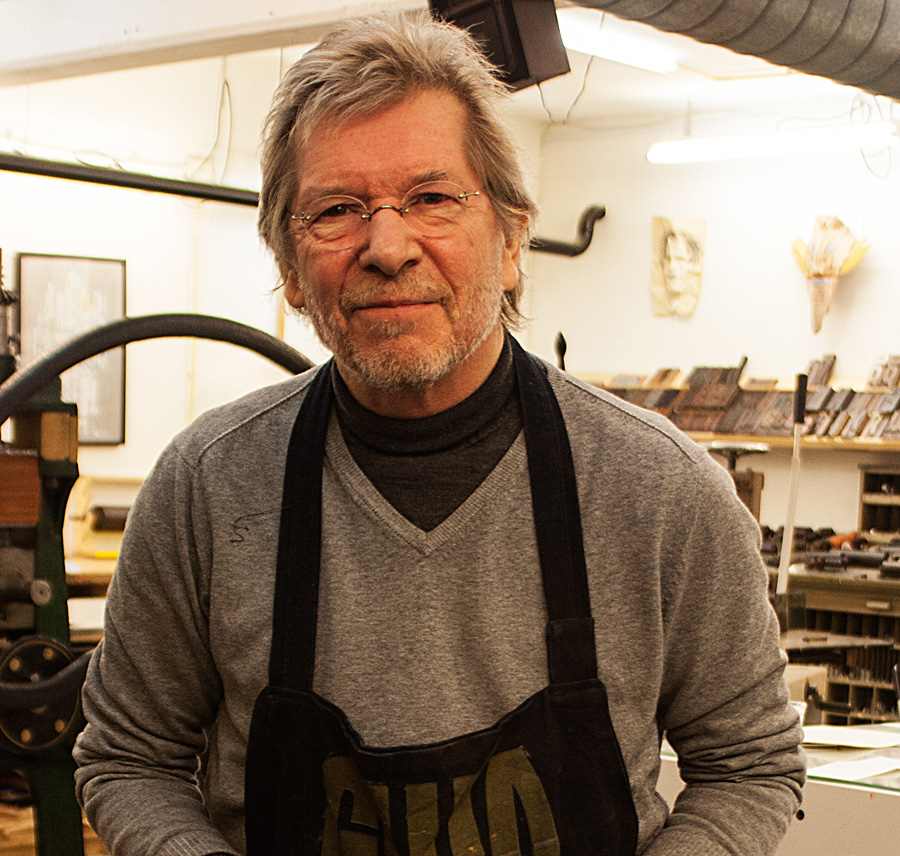
For more than 12 years, Wiek put all his energy into the workshop. As a cartwright, teacher, printer, designer, jack-of-all-trades and planner. His death in 2016, from cancer, was a major blow to GWA. His legacy, a beautiful workshop, has since been kept alive by dozens of employees who learned and loved from him. Until he passed away, almost literally, he remained responsible for every screw that was tightened.
In memory of Wiek, the Wiek Molin Fund was established. This fund ensures that a “Wiek Day” is organized every year, with an exhibition, a lecture, or a special print. Want to support this fund and the workshop? Transfer an amount of your choice to
NL06RABO0324626355 tnv Grafisch Werkcentrum Amsterdam ovv Wiek Molin Fonds.